Search Results for Tag: climate change
“Warm” ice in Everest glacier
The Khumbu Glacier at the foot of Mount Everest is apparently even more endangered by climate change than previously assumed. British glaciologists, who measured the ice temperature of the glacier in 2017 and 2018, point to this. At three drill sites up to an altitude of about 5,200 meters near Everest base camp, they used a specified adapted car wash unit to conduct hot water under high pressure into the ice. The scientists hung strings with temperature sensors in the resulting holes, the deepest of which reached about 130 meters deep into the ice. “The temperature range we measured was warmer than we expected – and hoped – to find,” says Duncan Quincey of Leeds University, leader of the “EverDrill” project.
![]() read more
read more
Alexander Huber: “Climate change is clearly noticeable”
Three attempts, then it was over. As reported, Alexander Huber, the Swiss Dani Arnold and the two East Tyroleans Mario Walder and Christian Zenz abandoned their expedition on the 7285-meter-high Ogre I in Pakistan and returned home. They had wanted to reach the summit of the mountain, which so far has been scaled only three times, over the still not mastered East Pillar. I spoke to Alexander, aged 48, the younger of the two Huber brothers, about the failed expedition.
Alexander, you wrote on Facebook that you knew what the mountain wanted to tell you. What was the message?
We set off to the mountain three times and were able to control the situation with maximum risk management three times. But we noticed every time that we were running extremely late. There was only a very short time window to move safely on the mountain. In this case you have to be en route with full steam to get out of the danger zone on time. We did it three times, and it turned out well. But one day it won’t work so well, and then you are in the middle of this extremely dangerous terrain and can not get out.
![]() read more
read more
Hard times for weather experts
“I’ve got some more gray hair,” said Karl, called “Charly” Gabl. “It was terrible.” The world-famous meteorologist from Austria was talking about the freak weather on Mount Everest during this spring season, which had made predictions as difficult as rarely before. Once again, Charly had pulled numerous all-nighters to advise top climbers from all over the world who trust him almost unconditionally. “The one computer model showed two and a half meters of fresh snow during a week, another one no precipitation. Which one should I take?”
![]() read more
read more
Time bomb Imja Tsho defused – for now
It’s like handling a water butt. The amount of rainfall is not manageable. If you want to prevent the butt from overflowing, you must drain the water. According to this model, the water level of Imja Tsho has now been lowered by a total of 3.40 meters over a period of two months. The glacial lake in the Everest region, which is almost 150 meters deep in some places, has steadily expanded over the last few years as a result of climate change, and has become a threat to the downstream villages, especially the nearby located Chukhung and Dingboche. A bursting of the natural dam at an altitude of about 5,000 meters could have devastating consequences. Soldiers from the Nepalese army were involved in the construction work for the canal, via which a total of four billion liters of water were drained. According to the government in Kathmandu, “an estimated 96,562 people, including tourists” – for this exact estimate Nepal earns an entry in the Guinness Book of Records 😉 – are expected to benefit from the project, which cost about three million US dollars and was funded by the United Nations. Daene McKinney, professor of Environmental and Water Resources Engineering at the University of Texas at Austin, was on site and has replied to my questions.
Professor McKinney, you were involved in the Imja Lake lowering project in the Everest region. How dangerous did you assess the situation before starting to drain the water?
![]() read more
read more
East Greenland: Alexander Huber and Co. pluck the day
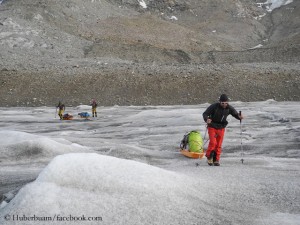 Sometimes climate change puts a spoke in adventurer’s wheel. Actually, German top climber Alexander Huber and his teammates from East Tyrol, Mario Walder, Bruno Schneider and Christian Zenz, had planned this summer to free climb the South Face of Tupilak in East Greenland, 16 years after the first ascent. “This is an absolutely awesome, steep wall,” says Alexander. “But we have not even got there. It was impossible to walk 40 to 50 km to the mountain without the use of sledges.” The bare glacier ice without snow cover and the small stones on it had wrecked the Pulkas, the plastic sledges, within only one third of the distance. The four climbers had taken their skis in vain.
Sometimes climate change puts a spoke in adventurer’s wheel. Actually, German top climber Alexander Huber and his teammates from East Tyrol, Mario Walder, Bruno Schneider and Christian Zenz, had planned this summer to free climb the South Face of Tupilak in East Greenland, 16 years after the first ascent. “This is an absolutely awesome, steep wall,” says Alexander. “But we have not even got there. It was impossible to walk 40 to 50 km to the mountain without the use of sledges.” The bare glacier ice without snow cover and the small stones on it had wrecked the Pulkas, the plastic sledges, within only one third of the distance. The four climbers had taken their skis in vain.
Alexander Huber had already visited East Greenland last year, but in another season. “You just cannot imagine in arctic winter that everything is completely free of snow in summer. This shows quite clearly the effect of climate change”, tells me the 47-year-old, the younger of the two Huber brothers. “It’s very unusual that the zero-degree line in Greenland is permanently at a height of 2500 to 3000 meters.”
![]() read more
read more
Huge ice avalanche in Tibet
This summer a mega ice avalanche has swept down on the Tibetan plateau. In the Aru Range in northwestern Tibet a whole glacier tongue broke off and tumbled down into the valley. Scientists say it was one of the largest ice avalanches ever recorded. According to the Chinese authorities this natural event, which already occurred on 17 July, killed nine Tibetan herders. More than 350 sheep and 110 yaks were buried under the ice and rock masses. The American space agency NASA now published satellite images which show the dimension: The ice covered an area of ten square kilometers, the lake down in the valley was colored white and the debris piled up 30 meters in some places. The cause of the collapse is still unclear. “Climate change is causing more glacial hazards through mechanisms we do not fully understand,” said the Chinese glaciologist Tian Lide. “There is an urgent need for more monitoring and research efforts, especially in populated areas in high mountains.”
I called the Swiss scientist Samuel Nussbaumer. The 35-year-old glaciologist is working for the World Glacier Monitoring Service (WGMS) in Zurich, which is observing and analyzing the fluctuation of glaciers worldwide.
![]() read more
read more
If the water towers are empty
It is no more than a coincidence, but a suitable one. This year the “International Mountain Day”, which, since 2002, is observed every year on 11 December, coincides exactly with the final day of the UN Climate Change Conference in Paris – that will end tomorrow hopefully with an agreement on climate protection which is more than just hot air. Mountains are considered as early warning systems for climate change (see the video below). Everyone who is often in the mountains would have to be blind not to perceive the changes. Glaciers are melting almost everywhere at record speed. For instance, more than two dozen mountains in Asia, Africa and South America, which are located near the equator and were once glaciated, will probably be completely ice-free within the next two to three decades. Permafrost in the mountains is in retreat too: soils that were permanently frozen before are thawing. Increased rockfall, more frequent landslides or mudslides are the result – not only in the Himalayas.
![]() read more
read more
Dawa Steven Sherpa: “Chances are running out”
It’s five to twelve, maybe later. Time is running out to tackle man-made climate change. The impacts of global warming can be observed also in the Himalayas, gpt instance in Nepal. “Largely because of climate change and the recent impacts of the earthquake and aftershocks, Nepal has entered an era of accelerated catastrophic events that will impact the country’s population, their lives and livelihoods for several years to come”, US and local scientists said after having researched the greatest and most dangerous glacial lakes in Nepal after the devastating 25 April earthquake.
In these days, delegates from all over the world are debating a new climate change agreement in Paris. On this occasion, I called Dawa Steven Sherpa in Kathmandu. Along with his father Ang Tshering Sherpa, the president of the Nepal Mountaineering Association (NMA), the 31-year-old is managing the expedition operator “Asian Trekking”. Dawa Steven scaled Everest twice (in 2007 and 2008) and in addition the eight-thousanders Cho Oyu (2006) and Lhotse (2009). For years he has been engaging for environmental and climate protection. He is a climate change ambassador for WWF.
![]() read more
read more
Climbing for climate protection
Heidi Sand knows how it is to accept a seemingly hopeless fight. “Since my cancer, I have a special relationship with probabilities and chances”, the 49-year-old German climber and sculptor write to me. “You have to believe in yourself and you should use any chance, no matter how small it is.” In 2010, Heidi was diagnosed with colon cancer at an advanced stage. She accepted the fight. Two years later, she climbed Mount Everest. In 2013, she summited Cho Oyu, her second eight-thousander. The following year, Sand and Billi Bierling were the first German women on top of Makalu. Now Heidi is committed to a climate protection project called “25zero”. During the upcoming climate summit in Paris, the Australian adventurer Tim Jarvis and his team want to point out the consequences of climate change for 25 still glaciated peaks at zero latitude, around the Equator. If nothing is done, says Jarvis, no ice or snow will remain on these mountains at the latest in 25 years – therefore “25zero”.
![]() read more
read more
Dalai Lama: Climate change threatens roof of the world
200 meters as the crow flies away from my desk, nothing less than the future of the planet is negotiated. Until Friday representatives from around the world are debating at the World Conference Center Bonn on a new climate agreement. It is to be adopted at the global climate talks in Paris, which will begin in late November. Once again the negotiations are long and tough. The solidarity with the states that are already feeling the effects of climate change is within limits. In most cases economy beats ecology. But the clock is ticking. With only a few exceptions, glaciers are melting worldwide. Glacier Works, an organization founded by US mountaineer David Breashears in 2007, has impressively documented how far for instance the glaciers around Mount Everest have retreated during the past decades. Now the Dalai Lama has pointed to the consequences of climate change for his Tibetan homeland.
![]() read more
read more
Garbage collection on Everest
When, finally, will a piggy bank be placed in the editorial offices, into which everyone has to pay five Euros, who calls Mount Everest the “highest garbage dump in the world”? The money could then be donated to environmental projects in Nepal. These days, the phrase again was often used in the German press. And hardly anyone made the effort to look at this more closely. What has happened? There is a new rule to remove garbage from Everest, no more and no less.
![]() read more
read more
Ang Tshering Sherpa: Endangered Everest
Ang Tshering’s biography can be assumed to be symbolic of the success story of the Sherpas in the past six decades. He was born in 1953, half a year after the first ascent of Mount Everest. In his home village Khumjung, on 3780 metres near the highest mountain of the world, Ang Tshering attended the school that was founded by Sir Edmund Hillary. The English skills which he had aquired there enabled him to work as a porter and interpreter for expeditions. In 1982 Ang Tshering founded „Asian Trekking”, today one of the leading agencies for expeditions and trekkings in Nepal. He married a Belgian woman, his son Dawa Steven studied in Scotland. Ang Tshering was and is not only a successful businessman with best worldwide contacts but has always been engaging for mountaineers. Since 1990 he is a member of the executive board of the Nepal Mountaineering Association, for nine years he was the president of the organization. In addition the 59-year-old Nepalese is the Immediate Past President of the Union of Asian Alpine Associations (UAAA) and Honorary Member of the International Mountaineering and Climbing Federation (UIAA). „Everest has put Nepal on the map as an ultimate (adventure) tourism destination”, Ang Tshering wrote to me after I had asked him for his thoughts about Everest on occasion of the 60-year-jubilee of the first ascent.
![]() read more
read more
Dawa Steven Sherpa: Everest belongs to all of us
Mount Sherpa. That would be a better suited name for the highest mountain of the world, which instead was named after Sir George Everest, a Surveyor-General of India in the 19th century. The history of Mount Everest is also a history of the Sherpas. The „eastern people” who had fled from Tibet to Nepal in earlier times were engaged for the early British expeditions in the 1920s. One of the two climbers who scaled Everest first in 1953 was a Sherpa: Tenzing Norgay. At the latest since commercial climbing was established on Everest sherpas have become indispensable. Without their support most of the clients wouldn’t have any chance to reach the summit. Due to this important role sherpas have an excellent reputation all over the world, many have achieved modest prosperity. Sherpas are also working as successful entrepreneurs, doctors or pilots. They know that these achievements are due to Everest. „As a Nepali, Mount Everest is my identity to the world. As a Sherpa, Mount Everest is the reason we have education, health care and prosperity”, Dawa Steven Sherpa wrote to me. „As a mountaineer, Mount Everest is the playground where I learned to explore myself, my limitations and my abilities as a person.”
![]() read more
read more



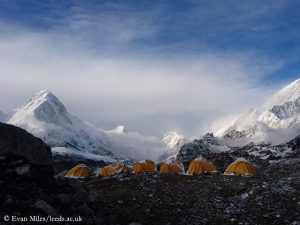

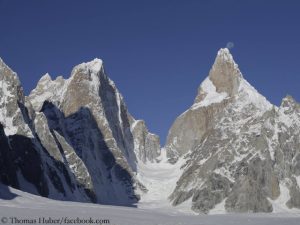
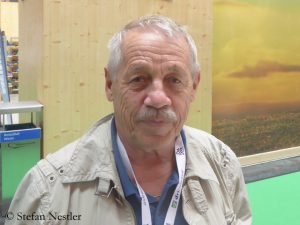

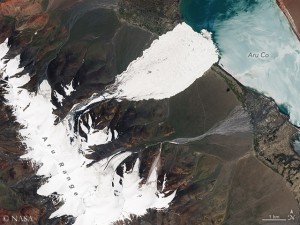
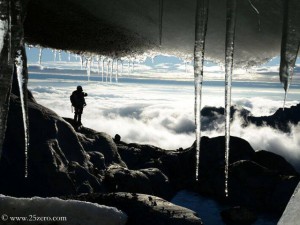
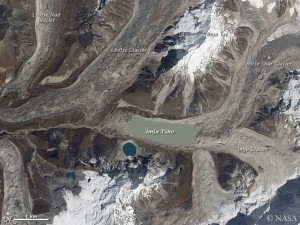
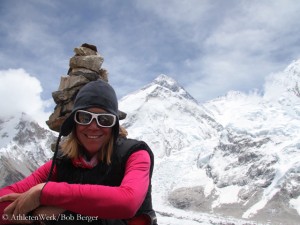
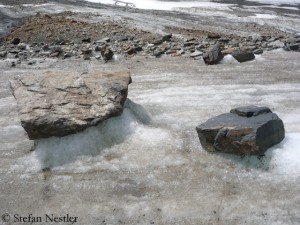
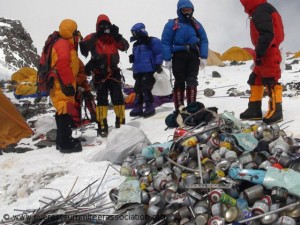



Feedback